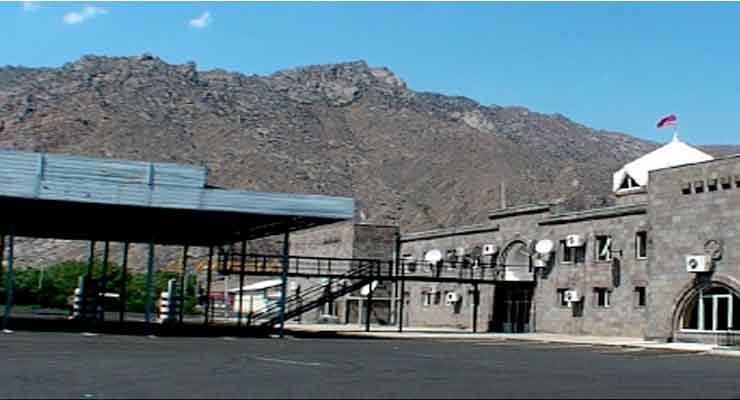 The economic growth targets, outlined in the political parties’ pre-election platforms, have been by and large met in Armenia over the past year to secure a tangible progress, according to politicians.
The economic growth targets, outlined in the political parties’ pre-election platforms, have been by and large met in Armenia over the past year to secure a tangible progress, according to politicians.
In a speech at a public debate entitled “Governing Political Parties’ Promises and the Reality: What was Promised and What is Being Done?”, the secretary of the ruling Republican faction in parliament, Gagik Melikyan, addressed particularly their coalition program with the Armenian Revolutionary Federation-Dashnaksutyun (ARF-D), highlighting the faster paces of progress compared to the other countries in the region.
“In 2017, we managed to secure a 7.7% economic growth, as well as a higher gross domestic product, and an economic activity above 12%. I find it really very important as [such a result] is not easily achievable, especially in a region like ours,” he said.
According to Suren Parsyan, a top representative of the ARF-D Development and Economic Research Center, the coalition plan was based largely upon the two parties’ pre-election programs and “progressive ideas and opinions proposed by the society”.
“We particularly [proposed a plan] for securing a 5% annual economic growth. And we have been able to realize that objective, increasing the exports to 40% against the GDP. So our export growth is 25.2% this year; we additionally intend to increase the salaries by 25%, considering specific steps and making specific calculations for that purpose,” he added.
Gagik Makaryan, the president of the Republican Union of Employers, also admitted the existing positive dynamics.
“Fact-based analyses, conducted among hundreds of employers since 2016, revealed seven basic obstacles, including specifically the shadow [income] and poor governance, corruption and unequal competition,” he said, stressing further the importance of confidence-building as the most important precondition to future progress.

 Armenia and Egypt have kicked off a new round of talks on economic and technical cooperation for the first time in over a decade, Egypt’s foreign ministry said on Wednesday, September 27, Ahram Online says.
Armenia and Egypt have kicked off a new round of talks on economic and technical cooperation for the first time in over a decade, Egypt’s foreign ministry said on Wednesday, September 27, Ahram Online says. Top German lawmakers have urged the EU to halt aid payments to Turkey and halt talks on a new customs union deal. The calls come as Berlin has revealed details of another German national detained in Turkey.
Top German lawmakers have urged the EU to halt aid payments to Turkey and halt talks on a new customs union deal. The calls come as Berlin has revealed details of another German national detained in Turkey. On Thursday, August 3, the Armenian government presented the list of its main economic partners, with which it has set itself the priority to develop its links.
On Thursday, August 3, the Armenian government presented the list of its main economic partners, with which it has set itself the priority to develop its links. YEREVAN, August 3. /ARKA/. The government of Armenia decided today to establish a state-owned closed joint-stock company – Meghri Free Economic Zone. The company’s authorized capital is 50,000 drams (less than $100). The company is created to ensure the establishment and operation of the free economic zone.
YEREVAN, August 3. /ARKA/. The government of Armenia decided today to establish a state-owned closed joint-stock company – Meghri Free Economic Zone. The company’s authorized capital is 50,000 drams (less than $100). The company is created to ensure the establishment and operation of the free economic zone. Russian President Vladimir Putin and Iraqi Vice President Nouri al-Maliki have held a meeting, during which they underlined the need for the reinforcement of bilateral “economic” and “military-technical” relations.
Russian President Vladimir Putin and Iraqi Vice President Nouri al-Maliki have held a meeting, during which they underlined the need for the reinforcement of bilateral “economic” and “military-technical” relations. Prime Minister Karen Karapetyan on Wednesday received the Israeli minister of regional cooperation, who is in Yerevan on an official visit .
Prime Minister Karen Karapetyan on Wednesday received the Israeli minister of regional cooperation, who is in Yerevan on an official visit .  Armenia’s Prime Minister Karen Karapetyan said on Saturday, November 19 that the country needs “profound change,” adding that “we’re proposing the most rapid change that’s possible,” including measures to combat corruption by streamlining bureaucracy and a government fund to support enterprise, Bloomberg reports.
Armenia’s Prime Minister Karen Karapetyan said on Saturday, November 19 that the country needs “profound change,” adding that “we’re proposing the most rapid change that’s possible,” including measures to combat corruption by streamlining bureaucracy and a government fund to support enterprise, Bloomberg reports. Hard-line President Recep Tayyip Erdogan risks losing Turkey’s lucrative customs union with the EU, its main trading partner. European Parliament chief Martin Schulz has said economic sanctions are being considered.
Hard-line President Recep Tayyip Erdogan risks losing Turkey’s lucrative customs union with the EU, its main trading partner. European Parliament chief Martin Schulz has said economic sanctions are being considered. YEREVAN. – State officials in Armenia will hereafter be fined for hindering economic competitiveness.
YEREVAN. – State officials in Armenia will hereafter be fined for hindering economic competitiveness.